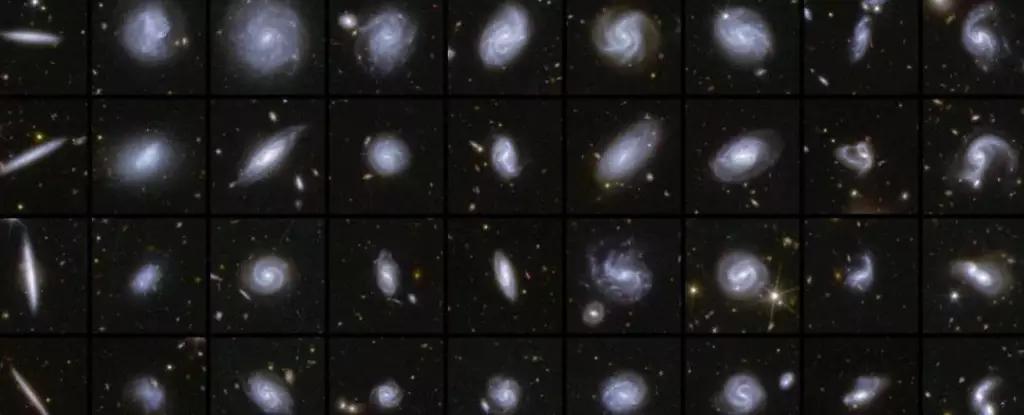The Euclid Space Telescope, launched by the European Space Agency (ESA) in July 2023, is quickly becoming one of the most groundbreaking instruments in modern astronomy. With its advanced technology and capabilities, Euclid has started to unveil extraordinary images of cosmic structures, immediately capturing the attention of scientists and space enthusiasts alike. Its mission stands out not just for beautiful imagery but for its ambitious goal: to explore the enigma of the Universe’s expansion and the elusive presence of dark matter and dark energy that govern its behavior.
Impressive Early Results
From the moment Euclid transmitted its first images, the excitement within the astronomical community was palpable. The telescope has already showcased images of iconic astronomical features such as the Perseus Cluster and Horsehead Nebula. However, what sets Euclid apart is its commitment to scrutinizing Deep Fields—regions of space that it will examine in depth over an extended period. Official reports indicate that Euclid has already identified 26 million galaxies in its initial scans, with some located as far as 10.5 billion light-years from Earth. The enormity of this data is staggering and only serves as the tip of the iceberg in Euclid’s extensive observational campaign slated to continue until 2030.
The Technological Marvel Behind the Observations
At the core of Euclid’s capabilities lies its 600 MB camera, which encompasses two formidable instruments: the Visible Imaging Channel (VIS) and the Near Infrared Spectrometer (NISP). While VIS captures exquisite details of celestial phenomena in visible light, NISP brings in crucial insights regarding the distances and masses of galaxies. This dual capability allows Euclid to create detailed maps of the cosmic web—a vast structure interlaced with galaxies, clusters, and dark matter filaments. As it captures multiple images of the same regions over time, Euclid aims to paint a comprehensive picture of the Universe’s architecture.
Deep Field Observations: A Treasure Trove of Data
Historical context indicates that deep field observations are vital for advancing our understanding of the cosmos. Previous missions, most notably Hubble, have illustrated how the meticulous study of such fields can yield profound insights into the composition and evolution of the Universe. Euclid is poised to build on this legacy by providing unprecedented access to the depths of the cosmos. Every time its instruments are pointed at the Deep Fields, they gather data that will allow scientists to track the formation and evolution of galaxies, potentially rewriting existing theories on cosmic evolution.
Shattering the Darkness: Insights into Dark Matter and Dark Energy
Understanding dark matter and dark energy is one of the most significant challenges facing contemporary astrophysics. By surveying billions of galaxies, Euclid’s mission could shed light on the distribution and behavior of these elusive cosmic forces. Clotilde Laigle, a scientist with the Euclid Consortium, emphasizes that while the full potential of these observations will become clear only after the mission’s conclusion, the preliminary data are already groundbreaking. They offer glimpses into how galaxies form and evolve over cosmic time, thereby helping scientists piece together the greater cosmic puzzle.
Collaborative Science: The Role of Technology and Community
Euclid’s mission benefits not just from groundbreaking technology but also from innovative approaches to data analysis, employing artificial intelligence alongside citizen science. The combination of these elements will facilitate the identification of monumental cosmic phenomena, such as the recently cataloged 500 strong gravitational lenses, most of which were previously unknown. This collaborative framework highlights that progress in space exploration and research isn’t solely dependent on cutting-edge technology but also on the synergy of experts and communities worldwide.
Future Implications: Transforming Our Understanding of the Universe
As scientists prepare to dive into the wealth of data provided by Euclid, expectations are high. Just as ESA’s Gaia mission has transformed our understanding of the Milky Way, Euclid is anticipated to become a cornerstone in cosmology. Its insights could lead to revolutionary advancements in our comprehension of dark matter and dark energy, addressing some of the most profound questions in astronomical science. In a domain rife with mysteries, Euclid presents itself as more than just a powerful telescope; it is an ambitious project that ties together advanced technology, collaborative efforts from global experts, and an unyielding quest to unlock the Universe’s secrets. The horizon of cosmic discovery is vast, and with initiatives like Euclid, we are well-equipped to navigate it.

